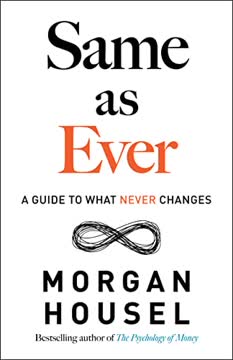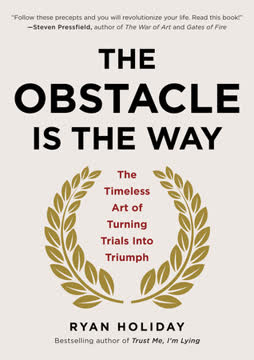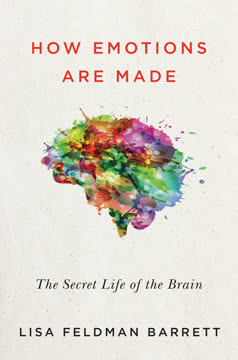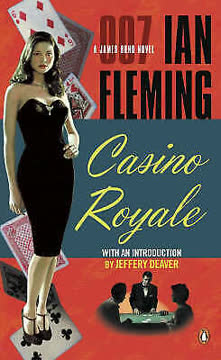نکات کلیدی
۱. بودای رقابتی: تلفیق بودیسم و ورزش برای رسیدن به کمال
«رقابت میتواند در معنای بودایی پیامدهای منفی داشته باشد، زمانی که پیروزی را به هر قیمتی بخواهید، حتی اگر به دیگران آسیب برسانید یا با آنها مهربان نباشید.»
تعریف نوین رقابت. رویکرد بودای رقابتی، ذهنیت سنتی «برد به هر قیمت» در ورزش را به چالش میکشد. این دیدگاه از نوعی رقابت همکارانه و مهربانانه حمایت میکند که در آن ورزشکاران با هم تلاش میکنند تا به بالاترین ظرفیت خود دست یابند. این نگرش با ریشهشناسی واژه «رقابت» (competere) که به معنای «با هم جستجو کردن یا تلاش کردن» است، همخوانی دارد.
زمینه تاریخی. برخلاف باور عمومی، بودیسم و ورزش رابطهای دیرینه دارند. خود بودا به عنوان یک کشتیگیر، تیرانداز و سوارکار ماهر شناخته میشد. این فعالیتها درسهای معنوی ارزشمندی درباره تعهد، انضباط و فداکاری به او آموختند. ورزشکاران معاصری مانند کوبی برایانت، لبرون جیمز و درک جیتر اصول بودایی را در برنامههای تمرینی خود به کار بردهاند که نشاندهنده اهمیت این رویکرد در ورزشهای امروزی است.
کاربردهای عملی:
- تمرکز بر رشد فردی به جای شکست دادن دیگران
- دیدن حریفان به عنوان شریک در بهبود متقابل
- پرورش شادی و حضور ذهن در فرایند رقابت
- پذیرفتن شکست به عنوان فرصتی برای یادگیری
۲. ذهن بودا، ذهن مامبا: ارزشهای جاودانه برای برتری ورزشی
«ذهنیت مامبا درباره کسب نتیجه نیست، بلکه درباره فرایند رسیدن به نتیجه است... همه چیز درباره سفر است.»
تسلط ذهنی. مفهوم ذهن بودا بر قدرت فکر در شکلدهی به عملکرد ورزشی تأکید دارد. با همسو کردن ذهن با اصول بودایی، ورزشکاران میتوانند به وضوح و تمرکز ذهنی دست یابند که تواناییهای جسمانیشان را تقویت میکند. ذهن مامبا، الهام گرفته از رویکرد کوبی برایانت، بر تعهد بیوقفه به پیشرفت و پذیرش چالشها تأکید دارد.
ارزشهای کلیدی بودایی برای ورزشکاران:
- شادی: یافتن لذت در فرایند، نه فقط در نتایج
- بیخودبینی: تمرکز بر موفقیت تیم به جای جلال شخصی
- شکرگزاری: قدردانی از فرصت رقابت و رشد
- سادگی: حذف حواسپرتیها و تمرکز بر ضروریات
- ایمان: باور به تواناییهای خود و قدرت تمرین
تکنیکهای عملی:
- مدیتیشن روزانه برای پرورش وضوح ذهنی
- تمرینهای تجسم برای تقویت نتایج مثبت
- تأییدهای ذهنی برای ساخت اعتماد به نفس و تابآوری
- تنفس آگاهانه برای مدیریت استرس و اضطراب در رقابت
۳. مهربانی و ایثار: قلب ورزشهای بودایی
«اگر میدانستی من درباره قدرت بخشش چه میدانم، هیچ غذایی را بدون به اشتراک گذاشتن آن نمیگذراندی.»
قدرت تحولآفرین مهربانی. در دنیای رقابتی ورزش، مهربانی و ایثار ممکن است غیرمنتظره به نظر برسند، اما این ویژگیها میتوانند محرکهای قدرتمندی برای انسجام تیمی، رشد فردی و در نهایت موفقیت باشند. با پرورش قلبی باز و مراقبتی واقعی نسبت به دیگران، ورزشکاران میتوانند محیطی حمایتگر ایجاد کنند که بهترینهای هر فرد را به ظهور میرساند.
مزایای رهبری مهربانانه:
- افزایش اعتماد و وفاداری میان اعضای تیم
- تقویت استقامت ذهنی و تابآوری
- بهبود ارتباطات و حل تعارض
- افزایش حس هدفمندی و انگیزه
کاربردهای عملی:
- اجرای تمرینات تیمسازی که بر همدلی و درک متقابل تمرکز دارند
- تشویق ورزشکاران به داوطلبی یا مشارکت در خدمات اجتماعی
- شناسایی و تجلیل از رفتارهای مهربانانه و ایثارگرانه در تیم
- پرورش فرهنگی مبتنی بر حمایت و تشویق متقابل
۴. حضور ذهن و آگاهی: کلید عملکرد برتر
«راز سلامت ذهن و بدن این است که برای گذشته غمگین نباشی، نگران آینده نباشی و مشکلات را پیشبینی نکنی، بلکه با خرد و جدیت در لحظه حال زندگی کنی.»
قدرت حضور. حضور ذهن، یکی از اصول بنیادین بودیسم، به عنوان عاملی حیاتی در عملکرد ورزشی شناخته میشود. با پرورش آگاهی از لحظه حال، ورزشکاران میتوانند تمرکز خود را افزایش دهند، اضطراب عملکرد را کاهش دهند و تصمیمات لحظهای را با وضوح بیشتری اتخاذ کنند. این مهارت به آنها امکان میدهد تا بدون بار شکستهای گذشته یا نگرانیهای آینده، به طور کامل در ورزش خود حضور یابند.
مزایای حضور ذهن در ورزش:
- بهبود تمرکز و دقت
- کاهش اضطراب و استرس عملکرد
- افزایش آگاهی بدنی و هماهنگی
- تسریع بهبودی از شکستها و اشتباهات
تکنیکهای حضور ذهن برای ورزشکاران:
- روتینهای مدیتیشن پیش از اجرا
- تمرینهای آگاهی از تنفس در طول تمرین و مسابقه
- تمرینهای اسکن بدن برای افزایش آگاهی فیزیکی
- تمرینهای خوردن و بازیابی آگاهانه
۵. پذیرش ناپایداری و بیدلبستگی در ورزش
«تنها چیزی را میتوانی از دست بدهی که به آن چسبیدهای.»
پذیرش تغییر. مفهوم ناپایداری در بودیسم بیان میکند که همه چیز در حال تغییر است. در ورزش، این اصل میتواند به ورزشکاران کمک کند تا با فراز و نشیبهای حرفهای خود با آرامش بیشتری روبرو شوند. با درک اینکه موفقیت و شکست هر دو حالتهای گذرا هستند، ورزشکاران میتوانند دیدگاهی متعادلتر و تابآوری بیشتری در مواجهه با چالشها داشته باشند.
بیدلبستگی در عمل:
- تمرکز بر فرایند به جای نتایج
- یادگیری رها کردن عملکردهای گذشته، چه خوب و چه بد
- سازگاری سریعتر با شرایط متغیر (مانند مصدومیتها، دینامیک تیم)
- حفظ ثبات عاطفی در موقعیتهای پر فشار
راهبردهای پرورش بیدلبستگی:
- تأمل منظم بر طبیعت گذرای دستاوردهای ورزشی
- تمرین شکرگزاری برای لحظه حال، بدون توجه به شرایط
- تعیین اهداف مبتنی بر فرایند به جای صرفاً نتایج
- توسعه علایق و هویتهای خارج از ورزش
۶. راه هشتگانه شریف: راهنمای رهبری آگاهانه در ورزش
«کسی که با ارادهای استوار راه هشتگانه شریف را میپیماید، بیتردید به نیروانا خواهد رسید.»
چارچوب اخلاقی برای ورزش. راه هشتگانه شریف، آموزهای بنیادین در بودیسم، راهنمایی جامع برای رهبری اخلاقی و آگاهانه در ورزش ارائه میدهد. با بهکارگیری این اصول، مربیان و ورزشکاران میتوانند فرهنگی مثبت در تیم ایجاد کنند که رشد فردی، احترام متقابل و موفقیت پایدار را تقویت میکند.
راه هشتگانه شریف در ورزش:
۱. دیدگاه درست: درک ماهیت واقعی رقابت و موفقیت
۲. نیت درست: پرورش انگیزههای مثبت برای مشارکت
۳. گفتار درست: استفاده از ارتباطات برای تشویق و ارتقاء
۴. کردار درست: رفتار اخلاقی در داخل و خارج میدان
۵. معاش درست: اطمینان از اینکه فعالیتهای ورزشی به جامعه سود میرساند
۶. تلاش درست: تعادل بین تعهد و مراقبت از خود و بازیابی
۷. حضور ذهن درست: حضور و آگاهی در طول تمرین و مسابقه
۸. تمرکز درست: توسعه توجه متمرکز برای عملکرد برتر
اجرای راه:
- برگزاری بحثهای منظم تیمی درباره مسائل اخلاقی در ورزش
- گنجاندن تمرینهای حضور ذهن در برنامههای تمرینی
- تشویق ورزشکاران به تأمل درباره انگیزهها و اهداف خود
- شناسایی و پاداش دادن به رفتارهایی که با این راه همسو هستند
۷. داستانهای ذن: حکمت کهن برای ورزشکاران معاصر
«صدای دست زدن یک دست.»
قدرت داستانسرایی. داستانهای ذن که به خاطر طبیعت پارادوکسیکال و بینشهای عمیقشان شناخته شدهاند، درسهای ارزشمندی برای ورزشکارانی ارائه میدهند که میخواهند درک عمیقتری از خود و ورزش خود پیدا کنند. این حکایتها تفکر جانبی را تشویق میکنند و ورزشکاران را به دیدن فراتر از خرد متعارف و کشف دیدگاههای نو درباره رقابت، موفقیت و رشد شخصی ترغیب میکنند.
موضوعات کلیدی در داستانهای ذن برای ورزشکاران:
- اهمیت ذهن مبتدی و یادگیری مداوم
- توهم کنترل و نیاز به سازگاری
- ارزش پایداری و صبر در مسیر کمال
- پیوستگی همه چیز، از جمله همتیمیها و حریفان
کاربرد حکمت ذن:
- استفاده از داستانهای ذن به عنوان محرک برای بحثهای تیمی و تأمل شخصی
- تشویق ورزشکاران به یافتن موازیهای مدرن با حکایتهای کهن
- ایجاد آیینها یا شعارهای تیمی الهامگرفته از آموزههای ذن
- به چالش کشیدن ورزشکاران برای خلق داستانهای خود که اصول کلیدی را تجسم میبخشند
آخرین بهروزرسانی::
FAQ
What's "The Competitive Buddha" about?
- Integration of Buddhism and Sports: "The Competitive Buddha" by Jerry Lynch explores how Buddhist principles can be applied to sports, leadership, and life to enhance performance and personal growth.
- Buddha as a Competitive Athlete: The book presents the idea that the Buddha himself was a competitive athlete, using sports as a means to learn spiritual lessons.
- Holistic Approach: It combines Eastern philosophy with Western psychology to create a holistic approach to mastering one's craft and achieving personal excellence.
- Practical Application: The book provides practical strategies and insights for athletes, coaches, and leaders to incorporate Buddhist values into their daily practices.
Why should I read "The Competitive Buddha"?
- Unique Perspective: It offers a unique perspective by blending ancient Buddhist wisdom with modern sports psychology, making it relevant for athletes and leaders.
- Personal Growth: The book emphasizes personal growth, self-awareness, and the development of a mindful approach to competition and leadership.
- Practical Tools: Readers gain practical tools and strategies to improve their mental and emotional resilience, which are applicable in various aspects of life.
- Inspiration and Motivation: Through stories and examples, the book inspires readers to strive for mastery and become the best version of themselves.
What are the key takeaways of "The Competitive Buddha"?
- Mindfulness and Presence: Emphasizes the importance of being present and mindful in both sports and life to achieve peak performance.
- Compassion and Connection: Highlights the role of compassion, connection, and cooperation in building successful teams and relationships.
- Detachment from Outcomes: Encourages detachment from outcomes and focusing on the process to reduce stress and enhance performance.
- Balance and Moderation: Advocates for a balanced approach to life, avoiding extremes, and finding the middle path for sustainable success.
How does Jerry Lynch apply Buddhist principles to sports in "The Competitive Buddha"?
- Mindful Meditation: Lynch introduces mindfulness meditation as a tool for athletes to enhance focus, calmness, and clarity.
- Servant Leadership: The book promotes the concept of servant leadership, where leaders serve their teams with compassion and humility.
- Egolessness and Selflessness: Encourages athletes to let go of ego and embrace selflessness to foster teamwork and collective success.
- Karma and Cause and Effect: Discusses the concept of karma, emphasizing that positive actions lead to positive outcomes in sports and life.
What is the "Mamba Mentality" mentioned in "The Competitive Buddha"?
- Kobe Bryant's Influence: The "Mamba Mentality" is inspired by Kobe Bryant's approach to sports, emphasizing a constant quest to be the best version of oneself.
- Process Over Results: It focuses on the journey and process rather than the end results, aligning with Buddhist teachings on detachment.
- Daily Practice: Encourages daily practice and intentional effort to improve skills and achieve mastery.
- Mindset of Excellence: The mentality embodies a mindset of excellence, resilience, and continuous learning.
What are some practical strategies from "The Competitive Buddha" for athletes?
- Visualization Techniques: Athletes are encouraged to use visualization to mentally rehearse and prepare for competitions.
- Breathing Exercises: The book suggests breathing exercises to calm the mind and enhance concentration during high-pressure situations.
- Gratitude Practices: Incorporating gratitude practices to foster a positive mindset and improve overall well-being.
- Setting Intentions: Athletes are advised to set clear intentions for their practice and competitions to stay focused and motivated.
How does "The Competitive Buddha" address leadership?
- Noble Mindful Leadership: The book outlines the traits of mindful leaders, such as right speech, right action, and right mindfulness.
- Relationship Building: Emphasizes the importance of building strong, compassionate relationships with team members.
- Empowerment and Inspiration: Leaders are encouraged to empower and inspire their teams through love, respect, and understanding.
- Servant Leadership Model: Advocates for a leadership model where leaders serve their teams and prioritize their growth and development.
What are the best quotes from "The Competitive Buddha" and what do they mean?
- "There is no path to mastery; mastery is the path." This quote emphasizes that mastery is a continuous journey of learning and growth, not a final destination.
- "Letting go gives us freedom, and freedom is the only condition for happiness." Highlights the importance of detachment and letting go of attachments to achieve true happiness.
- "Our prime purpose in this life is to give to and help others." Reflects the Buddhist value of selflessness and serving others as a path to fulfillment.
- "The secret of health for both mind and body is not to mourn for the past, worry about the future, or anticipate troubles, but to live in the present moment wisely and earnestly." Encourages living in the present moment to maintain mental and physical well-being.
How does "The Competitive Buddha" redefine competition?
- Collaboration Over Rivalry: Redefines competition as a collaborative effort where opponents help each other reach their highest potential.
- Joy in Competition: Encourages finding joy and fulfillment in the act of competing, rather than focusing solely on winning.
- Interconnectedness: Emphasizes the interconnectedness of all participants in a competition, fostering a sense of community and mutual respect.
- Healthy Competition: Promotes a healthy approach to competition that prioritizes personal growth and development over defeating others.
What role does mindfulness play in "The Competitive Buddha"?
- Foundation of Practice: Mindfulness is presented as the foundation for all practices in the book, enhancing focus, clarity, and presence.
- Reducing Stress: Mindfulness techniques are used to reduce stress and anxiety, allowing athletes to perform at their best.
- Enhancing Awareness: Encourages athletes and leaders to develop greater awareness of their thoughts, emotions, and actions.
- Cultivating Inner Peace: Mindfulness is a tool for cultivating inner peace and resilience, essential for navigating the challenges of sports and life.
How does "The Competitive Buddha" address the concept of impermanence?
- Acceptance of Change: Emphasizes the acceptance of change as a natural part of life and sports, reducing resistance and suffering.
- Embracing the Present: Encourages embracing the present moment and appreciating the transient nature of experiences.
- Learning from Loss: Teaches that losses and setbacks are opportunities for growth and learning, not permanent failures.
- Letting Go of Control: Advocates for letting go of the need to control outcomes and trusting the natural flow of life.
What is the significance of the Enso circle in "The Competitive Buddha"?
- Symbol of Oneness: The Enso circle symbolizes oneness, harmony, and the infinite journey of life and mastery.
- Emptiness and Potential: Represents the concept of emptiness, reminding readers to keep their minds open to new wisdom and possibilities.
- Balance and Unity: Emphasizes balance, unity, and the interconnectedness of all things, aligning with the book's themes.
- Visual Reminder: Serves as a visual reminder of the book's teachings, encouraging readers to embrace the journey of self-discovery and growth.
نقد و بررسی
کتاب «بودای رقابتی» با نظرات متفاوتی روبهرو شده و میانگین امتیاز آن ۳.۷۹ از ۵ است. خوانندگان ترکیب آموزههای بودایی و ورزشهای رقابتی در این اثر را میپسندند و ارزشمندی مطالب آن دربارهی ناپایداری و رشد فردی را تحسین میکنند. برخی از دیدگاههای نویسنده و تجربیات او با تیمهای قهرمان تمجید کردهاند. با این حال، منتقدان به تکرار مکرر مطالب، تمرکز بیش از حد بر موفقیتهای شخصی نویسنده و پرداخت محدود به جنبههای بودایی فراتر از انگیزشی بودن اشاره کردهاند. رویکرد کتاب در تلفیق فلسفهی شرقی با ورزش، منحصر به فرد ارزیابی شده، هرچند ممکن است برای کسانی که با مفاهیم بودایی آشنایی ندارند، چالشبرانگیز باشد.
Similar Books
















